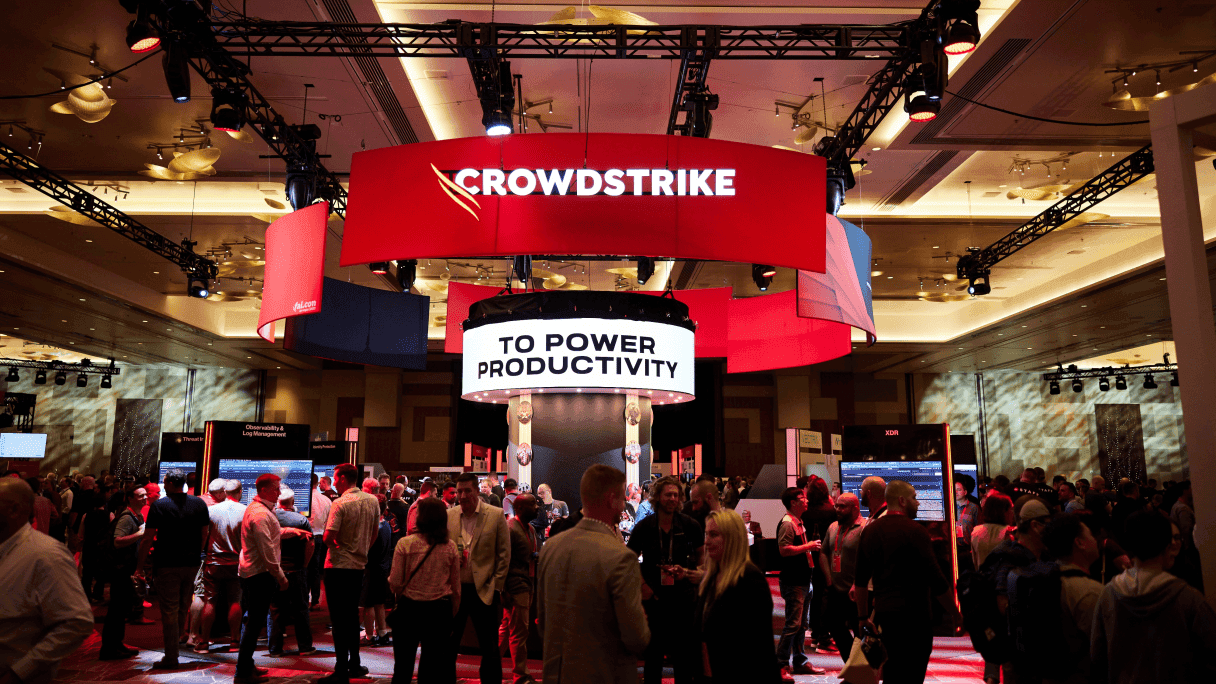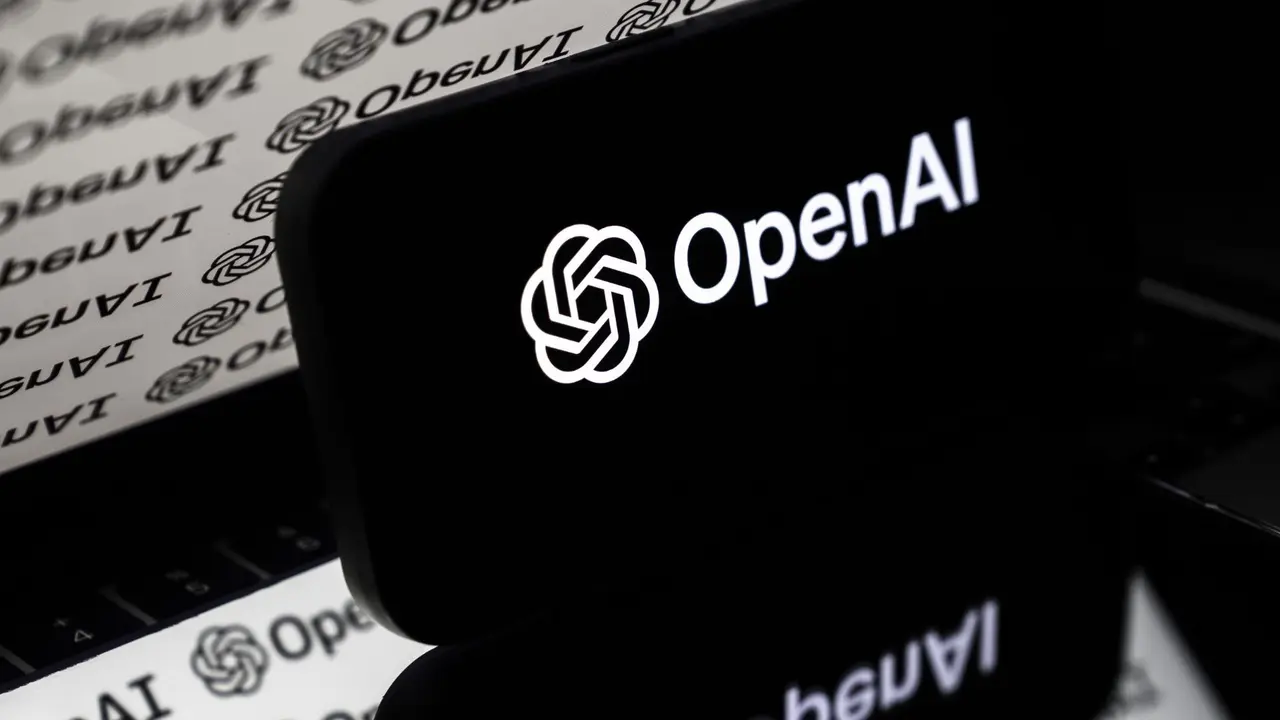CrowdStrike's Q1 Earnings Beat Expectations, Driven by AI Innovation and Falcon Flex Success
7 Sources
7 Sources
[1]
We're raising our CrowdStrike price target after shortsighted post-earnings selling
CrowdStrike on Tuesday evening reported quarterly beats on many of the key metrics that investors focus on. However, it also delivered mixed guidance. As a result, we're not surprised to see some profit-taking in after-hours trading, following Tuesday's record-high close of nearly $489 per share. Revenue in the fiscal 2026 first quarter increased 20% year over year to $1.1 billion, landing right in line with estimates, according to LSEG. Growth was seen in all major geographic regions. Adjusted earnings per share (EPS) declined 8% annually to 73-cents in the three months ended April 30, but that was ahead of the 65-cent estimate, LSEG data showed. Annual recurring revenue (ARR) jumped 22% to $4.44 billion, also ahead of the $4.42 billion estimate, according to FactSet. This represented a net new addition of $193.8 million. Remaining performance obligations (RPO) increased 45% year-over-year to $6.8 billion, beating the $6.16 billion FactSet consensus. Management also announced a new $1 billion share repurchase authorization. CRWD YTD mountain CrowdStrike YTD With a lot to like about the quarter and guidance we can live with, we're raising our price target to $500 per share from $400. That reflects a premium of more than 9% to Wednesday's indicated open around $457. Even with an after-hours decline of more than 6%, the stock was still up over 40% from its 2025 low of $321.63 on April 4 -- two trading days after President Donald Trump 's evening announcement on April 2 of much higher than expected "reciprocal" tariffs. CrowdStrike shares never deserved to be that low, but a move like that must be respected. So, we're maintaining our hold-equivalent 2 rating. Bottom line By nitpicking the results, the sellers Tuesday evening are missing the forest for the trees. Sure, CrowdStrike's current quarter and fiscal year 2026 guidance were mixed. But in both cases, profitability was better than expected. More importantly, CEO George Kurtz said on the post-earnings conference call that CrowdStrike's Falcon Flex subscription model is "accelerating platform adoption at a faster pace than we've ever seen before." The reality is that demand for best-in-class cybersecurity is only going to grow as artificial intelligence advances and hackers adopt increasingly sophisticated tools. Cybersecurity is not a discretionary buy for corporations, it's a critical expense that must be prioritized regardless of economic conditions or tariff fears. With net new ARR expected to accelerate in coming quarters -- and management calling for further expansion of both adjusted operating income margin and free cash flow margin in its fiscal year 2027 to "at least 24%" and "more than 30%," respectively -- the stock's post-release decline will likely prove to be a buying opportunity as it has in the past. Why we own it Cybersecurity is a must-have for companies in the digital age. Led by co-founder and CEO George Kurtz, CrowdStrike is one of the best there is (along with fellow Club name Palo Alto Networks ). The company specializes in endpoint protection through its AI-native platform called Falcon. Competitors: Palo Alto Networks, Fortinet , SentinelOne , Microsoft Portfolio weighting: 3.6% Most recent buy: March 10, 2025 Initiation date: Oct. 16, 2024 Quarterly commentary The hard work Kurtz and his team have been putting in since CrowdStrike's botched software update caused a global IT outage back in July 2024 continues to pay off, and the momentum we're seeing now may even accelerate in the quarters to come. On the call, Kurtz noted that the company's nearly $194 million net new ARR result came in "double-digit millions" ahead of the team's own expectations. He was also sure to call out that CrowdStrike's gross customer retention held in at 97%, in line with the prior two quarters. Subscription gross margin was also a bright spot, coming in at 80%, on an adjusted basis. Operating cash flow, meanwhile, represented a new quarterly record and helped drive the team to a 25% free cash flow margin and double-digit free cash flow growth, sequentially. Kurtz said on the call that customers who adopt the Falcon Flex subscription -- over 820 accounts, so far -- spend more, commit to longer durations, and tend to adopt the Falcon platform more quickly, with more than 75% of those contracts already deployed. The Falcon Flex model allows customers to achieve a low total cost of ownership while optimizing security by letting them swap one security module for another as needed. During the quarter, Kurtz noted that the team "added $774 million of total Falcon Flex account value, bringing the total deal value of accounts that have adopted Falcon Flex to $3.2 billion." That represents a 31% increase versus the prior quarter and a greater than six-fold increase versus the year-ago period. Given the strong momentum seen in the first quarter, Kurtz is confident that we will see even better sequential net new ARR growth in the current quarter, with an acceleration in the back half of the year, consistent with prior commentary. Guidance For full-year fiscal 2026, CrowdStrike management expects total revenue of $4.74 billion to $4.81 billion, unchanged from the prior guide. But at the midpoint, it was slightly below the $4.79 billion consensus estimate, according to FactSet. The company raised its adjusted EPS outlook to a range of $3.44 to $3.56, which at the midpoint was above the $4.46 expected. Adjusted operating income was also raised to between $970.8 million and $1.01 billion, which at the midpoint of $990.8 million outpaced the $976 million expected. For its 2026 fiscal second quarter, CrowdStrike's revenue guidance at the midpoint was $1.15 billion, a bit below the $1.16 billion consensus. The midpoint of guidance for operating income of $230 million and EPS of 83 cents, however, outpaced expectations of $227 million and 81 cents, respectively. While the team does not guide for net new ARR, CFO Burt Podbere commented on the call that this guidance for the current quarter assumes a "sequential net new ARR growth rate to be at least double over what we saw from Q1 to Q2 in the prior fiscal year." (Jim Cramer's Charitable Trust is long CRWD. See here for a full list of the stocks.) As a subscriber to the CNBC Investing Club with Jim Cramer, you will receive a trade alert before Jim makes a trade. Jim waits 45 minutes after sending a trade alert before buying or selling a stock in his charitable trust's portfolio. If Jim has talked about a stock on CNBC TV, he waits 72 hours after issuing the trade alert before executing the trade. THE ABOVE INVESTING CLUB INFORMATION IS SUBJECT TO OUR TERMS AND CONDITIONS AND PRIVACY POLICY , TOGETHER WITH OUR DISCLAIMER . NO FIDUCIARY OBLIGATION OR DUTY EXISTS, OR IS CREATED, BY VIRTUE OF YOUR RECEIPT OF ANY INFORMATION PROVIDED IN CONNECTION WITH THE INVESTING CLUB. NO SPECIFIC OUTCOME OR PROFIT IS GUARANTEED.
[2]
CrowdStrike earnings beat expectations but revenue outlook weighs on shares - SiliconANGLE
CrowdStrike earnings beat expectations but revenue outlook weighs on shares Shares in CrowdStrike Holdings Inc. were down over 5% in late trading today after the cybersecurity company reported solid fiscal 2026 first quarter results but fell short of expectations with its second quarter outlook. For the quarter that ended on April 30, CrowdStrike reported adjusted earnings per share of 73 cents, down from 79 cents per share in the same quarter of the previous fiscal year, on revenue of $1.1 billion, up 20% year-over-year. The adjusted earnings per share was ahead of the 65 cents expected by analysts, while revenue was in line with expectations. As of the end of April, CrowdStrike at had annual recurring revenue of $4.44 billion, up 22% year-over-year, including $193.8 million in net new annual recurring revenue added in the quarter. Net cash generated from operations in the quarter came in at $384.1 million, a record high for the company and CrowdStrike ended the quarter with $4.61 billion in cash and cash equivalents on hand. Business highlights in the quarter included multiple product and service expansions aimed at enhancing CrowdStrike's identity, endpoint and cloud security offerings. The company launched Falcon Identity Protection for Microsoft Entra ID, extending real-time detection and response capabilities to hybrid identity environments. It also introduced Charlotte AI Detection Triage, leveraging Nvidia Corp.'s artificial intelligence to automate alert triage and streamline security operations. CrowdStrike continued investing in AI-powered solutions with the release of an agentless network vulnerability assessment tool that analyzes routers, switches and firewalls without traditional scanning. The Falcon platform also received FedRAMP High Authorization, allowing U.S. federal agencies to adopt the platform for critical workloads. April saw the rollout of Falcon Privileged Access, a product designed to unify identity and endpoint protection for better control over privileged accounts. CrowdStrike also introduced Falcon Adversary OverWatch for Next-Gen SIEM, extending managed threat hunting to third-party data sources beyond endpoints. "We started the fiscal year with record Q1 large deal and MSSP momentum alongside sustained 97% gross retention and consistently strong net retention as the market consolidates on Falcon as its cybersecurity platform of choice for the agentic AI era," said George Kurtz, founder and chief executive officer of CrowdStrike, in the company's earnings release. "The scale of Falcon Flex demand and the pace of innovation across AI, next-gen SIEM, cloud, identity, and exposure management advances us towards $10 billion in ending ARR." For its fiscal 2026-second quarter, CrowdStrike expects adjusted earnings per share of 82 cents to 84 cents on revenue of $1.145 billion to $1.152 billion. The share outlook was ahead of the 81 cents expected by analysts, but the revenue fell short of an expected $1.16 billion. For the full fiscal year, the company expected adjusted earnings of $3.44 to $3.56 per share on revenue of $4.744 billion to $4.806 billion. Analysts had been expecting $3.43 per share on revenue of $4.77 billion. Alongside its earnings, CrowdStrike also announced a $1 billion share buyback plan. CrowdStrike CEO Kurtz spoke with theCUBE, SiliconANGLE Media's livestreaming studio earlier this year when he discussed how the company was defending against faster, smarter, AI-powered adversaries.
[3]
CrowdStrike first quarter results beat earnings expectations but revenue outlook weighs on shares - SiliconANGLE
CrowdStrike first quarter results beat earnings expectations but revenue outlook weighs on shares Shares in CrowdStrike Holdings Inc. were down over 5% in late trading today after the cybersecurity company reported solid fiscal 2026 first quarter results but fell short of expectations with its second quarter outlook. For the quarter that ended on April 30, CrowdStrike reported adjusted earnings per share of 73 cents, down from 79 cents per share in the same quarter of the previous fiscal year, on revenue of $1.1 billion, up 20% year-over-year. The adjusted earnings per share was ahead of the 65 cents expected by analysts, while revenue was in line with expectations. As of the end of April, CrowdStrike at had annual recurring revenue of $4.44 billion, up 22% year-over-year, including $193.8 million in net new annual recurring revenue added in the quarter. Net cash generated from operations in the quarter came in at $384.1 million, a record high for the company and CrowdStrike ended the quarter with $4.61 billion in cash and cash equivalents on hand. Business highlights in the quarter included multiple product and service expansions aimed at enhancing CrowdStrike's identity, endpoint and cloud security offerings. The company launched Falcon Identity Protection for Microsoft Entra ID, extending real-time detection and response capabilities to hybrid identity environments. It also introduced Charlotte AI Detection Triage, leveraging Nvidia Corp.'s artificial intelligence to automate alert triage and streamline security operations. CrowdStrike continued investing in AI-powered solutions with the release of an agentless network vulnerability assessment tool that analyzes routers, switches and firewalls without traditional scanning. The Falcon platform also received FedRAMP High Authorization, allowing U.S. federal agencies to adopt the platform for critical workloads. April saw the rollout of Falcon Privileged Access, a product designed to unify identity and endpoint protection for better control over privileged accounts. CrowdStrike also introduced Falcon Adversary OverWatch for Next-Gen SIEM, extending managed threat hunting to third-party data sources beyond endpoints. "We started the fiscal year with record Q1 large deal and MSSP momentum alongside sustained 97% gross retention and consistently strong net retention as the market consolidates on Falcon as its cybersecurity platform of choice for the agentic AI era," said George Kurtz, founder and chief executive officer of CrowdStrike, in the company's earnings release. "The scale of Falcon Flex demand and the pace of innovation across AI, next-gen SIEM, cloud, identity, and exposure management advances us towards $10 billion in ending ARR." For its fiscal 2026-second quarter, CrowdStrike expects adjusted earnings per share of 82 cents to 84 cents on revenue of $1.145 billion to $1.152 billion. The share outlook was ahead of the 81 cents expected by analysts, but the revenue fell short of an expected $1.16 billion. For the full fiscal year, the company expected adjusted earnings of $3.44 to $3.56 per share on revenue of $4.744 billion to $4.806 billion. Analysts had been expecting $3.43 per share on revenue of $4.77 billion. Alongside its earnings, CrowdStrike also announced a $1 billion share buyback plan. CrowdStrike CEO Kurtz spoke with theCUBE, SiliconANGLE Media's livestreaming studio earlier this year when he discussed how the company was defending against faster, smarter, AI-powered adversaries.
[4]
CrowdStrike CEO: Subscription Deals Surging As Falcon Flex Is A 'Home Run'
The cybersecurity giant saw newly added total account value from its Falcon Flex subscription model jump 31 percent in a single quarter, helping to drive business in newer product categories such as Next-Gen SIEM, CrowdStrike CEO George Kurtz said Tuesday. CrowdStrike saw a major spike in business related to its Falcon Flex subscription model during the cybersecurity vendor's latest quarter, helping to drive business in newer product categories such as Next-Gen SIEM, CrowdStrike Co-founder and CEO George Kurtz said Tuesday. Kurtz made the comments as CrowdStrike disclosed financial results for the first quarter of its fiscal 2026, ended April 30, which included a surge in Falcon Flex deals. [Related: CrowdStrike CBO On 'Embracing AI' In Security, Next-Gen SIEM 'Transformation'] The Flex subscription model simplifies and expedites procurement while providing larger discounts for bigger commitments -- helping to incentivize customers to deploy more of the 30 modules on CrowdStrike's Falcon platform, according to the company. For CrowdStrike's fiscal Q1, the vendor saw newly added Falcon Flex account value jump 31 percent from the prior quarter sequentially, reaching $774 million in total account value for Flex. "Seeing our customers and ecosystem embrace Falcon Flex at this speed and scale gives me confidence" looking ahead, Kurtz said Tuesday during the company's quarterly call with analysts. CrowdStrike has closed more than $3.2 billion of total Flex deal value -- from more than 820 accounts -- since debuting the subscription model less than two years ago, he said. Recent customer wins from Flex have included a Fortune 100 technology firm that went from a $12 million contract for EDR (endpoint detection and response) previously to a contract worth more than $100 million as a result of the Flex model, according to Kurtz. Flex enabled an evolution for the customer "from what was a singular outcome sale into a multi-dimensional platform experience more than eight times the size of the initial deal," he said. A related highlight is the growth of customers that have already fully deployed their initial Flex contract and returned for a second Flex deal, which Kurtz termed "re-Flex" deals. So far, 39 customers have signed up for "re-Flexes," he said. Just five months into their nearly three-year contracts, "they came back to CrowdStrike wanting more of the Falcon platform to achieve their cybersecurity consolidation goals," he said. "The model we pioneered is a game-changer. Flex accelerates what would have taken years of module sales cycles into rapid platform transformations, unlocking adoption and spend while creating even more platform stickiness." In response to an analyst's question on Flex later during the call, Kurtz summarized the momentum this way: "I think the net of it is, Falcon Flex has been a real home run." Key products getting a boost from Falcon Flex include CrowdStrike's Next-Gen SIEM, according to Kurtz. The offering aims to replace aging SIEM (security information and event management) tools with an approach that makes full use of cloud-native technologies and AI, executives have said. "I think if you look at Next-gen SIEM with some of our larger GSIs, Falcon Flex is the perfect complement to running out existing legacy licenses and then being able to bring up Next-gen SIEM," Kurtz said during the call Tuesday. "So I think for sure, Next-Gen SIEM is one of the areas that's benefiting." In March, CrowdStrike announced a major channel expansion as the cybersecurity giant unveiled its new Services Partner Program, which is seeing the company primarily rely on partners to deliver the services around its fast-growing Falcon Next-Gen SIEM offering. Total revenue for CrowdStrike's first quarter of its fiscal 2026 was $1.10 billion, up 20 percent from the same period a year earlier and slightly below the Wall Street analyst consensus estimate for the quarter. CrowdStrike's stock price was down about 6.5 percent, to $457.09 a share, in after-hours trading Tuesday evening as the company also reportedly fell short of analyst expectations for its revenue forecast. Responding to an analyst's question referencing impacts on other cybersecurity vendors from macroeconomic uncertainty, Kurtz said the company has remained focused on growth and done a "great job on execution" recently. He pointed to the company's net new ARR (annual recurring revenue) during its latest quarter, which totaled $193.8 million. The results show that "customers want to buy more and more from us," Kurtz said. "I think the team did a fantastic job in the environment that had a lot of noise -- to power through it and deliver the results as we delivered."
[5]
CrowdStrike Q1 Revenue Jumps 20% | The Motley Fool
CrowdStrike (CRWD -5.18%) reported first quarter fiscal 2026 results on June 3, 2025, exceeding internal expectations with $194 million in net new annual recurring revenue (ARR), $1.1 billion in total revenue (up 20% year over year), $279.4 million in free cash flow (25% margin), and 97% gross retention. The company delivered $774 million in new FalconFlex account value and raised its FY2027 adjusted operating and free cash flow margin targets, underpinned by accelerated platform adoption and strong partner momentum. This summary delivers discrete insights into FalconFlex's transformative impact, artificial intelligence (AI)-native security innovation, and strategic capital allocation updates, each supported with exact transcript quotes and precise details for long-term investors. FalconFlex total deal value reached $3.2 billion, up more than sixfold year over year, and 820 unique customers are averaging 31-month terms with a $1 million-plus average ARR per flex customer. The "reflex" dynamic -- customers returning quickly after initial flex deployments -- demonstrates drastically shortened sales cycles and large upsells, as highlighted by a Fortune 100 client that increased its spend from $12 million over a three-year term to over $100 million in a single five-year contract. "These customers' initial flex contracts were 35 months, nearly three years on average, and within just five months, they came back to CrowdStrike Holdings, Inc. wanting more of the Falcon platform to achieve their cybersecurity consolidation goals. The model we pioneered is a game changer. Flex accelerates what would have taken years of module sales cycles into rapid platform transformations unlocking adoption and spend while creating even more platform stickiness." -- George Kurtz, Chief Executive Officer and Founder This evolution in selling motion from individual modules to holistic demand-planning creates a durable competitive moat, dramatically enhances multi-product adoption speed, and structurally raises long-term revenue visibility and customer lifetime value. With the proliferation of AI agents, the company sees a rapidly expanding addressable market, as 96% of surveyed enterprises intend to increase AI agent deployments within a year, and many expect agent populations to exceed 1 billion. The company's Charlotte AI agent and newly launched AI model scanning further reinforce its technical leadership in automating SOC operations and securing emergent attack surfaces. "As an AI-first company, CrowdStrike Holdings, Inc. is uniquely positioned to secure the identity, the workload, the infrastructure, the data, and underlying AI models themselves. We have the platform, have the expertise. We have the track record. CrowdStrike Holdings, Inc. will be the protector of autonomous AI agents." -- George Kurtz, Chief Executive Officer and Founder The company's early and deep integration of AI automation provides a significant first-mover advantage in securing both human and AI identities, directly tying future incremental growth to industry-wide adoption of enterprise AI. The board authorized up to $1 billion in share repurchases, backed by a record $4.61 billion in cash and equivalents and ongoing robust free cash flow generation. A strategic realignment executed in May prioritizes accelerated investment in AI, cloud, identity, and next-gen SIEM (Security Information and Event Management), while management now targets FY2027 non-GAAP operating margins of at least 24% and free cash flow margins above 30%. "Additionally, the share repurchase authorization of up to $1 billion that we announced today reflects our confidence in CrowdStrike Holdings, Inc.'s long-term strategy, including M&A, growth prospects, and robust cash flow generation capabilities, as we scale on the path to $10 billion in ending ARR." -- Burt Podbere, Chief Financial Officer The combination of operational discipline, targeted investment, and selective capital returns increases both intrinsic value per share and flexibility for disciplined M&A, while signaling strong management conviction in durable secular growth and disciplined capital allocation. Management guides revenue (GAAP) between $1.14 billion and $1.15 billion ( up 19% year over year), with adjusted earnings of $0.82-$0.84 per diluted share; full-year revenue is expected in the $4,743.5 million-$4,805.5 million range (up 20%-22%). Sequential net new ARR growth is projected to be at least double last year's Q1-to-Q2 rate (non-GAAP), and FY2027 margin targets are raised to at least 24% for non-GAAP operating margin and over 30% for free cash flow margin. Management reiterates that FalconFlex momentum, customer reflexes, realignment efficiencies, and an expanding pipeline underlie expectations for reacceleration in ARR growth in the back half of FY2026 and continuing into FY2027 (non-GAAP).
[6]
CrowdStrike Stock Drops on Cautious Outlook -- Is This a Buying Opportunity? | The Motley Fool
Share prices of CrowdStrike (CRWD 1.20%) sank after the company reported further deceleration of its revenue growth and maintained its full-year revenue guidance. Despite the share-price decline and the cybersecurity company's forecast disappointing investors for the second time in 2025, the stock still trades up nearly 37% on the year, as of this writing. When CrowdStrike's stock dipped in reaction to its fiscal 2026 first-quarter earnings report in March, it was a good buying opportunity. Let's take a closer look at its most recent Q2 results (which ended April 30) and guidance to see whether investors should buy this dip as well. During its fiscal first quarter, CrowdStrike saw both its revenue and annual recurring revenue (ARR) continue to decelerate. Its revenue jumped 20% to $1.1 billion, which matched the analyst consensus as compiled by LSEG. Subscription revenue also rose by 20% to $1.05 billion. Its ARR, which is the annualized value of CrowdStrike's customer subscription contracts, rose by 22% to $4.44 billion, as it added $193.8 million in new ARR during the quarter. ARR can be an indication of future revenue growth. Both its revenue and ARR growth have continued to decelerate over the past several quarters, as seen in the table below. Data source: CrowdStrike earnings reports. CrowdStrike's fiscal year ends Jan. 31. However, the company said it expects to see improving sequential net new ARR growth next quarter and accelerating ARR growth in the second half of the fiscal year. This confidence stems from the strong adoption of Falcon Flex, which is a flexible licensing agreement whereby customers deploy modules only when needed to access its entire portfolio. It said that in less than two years, it has closed more than 820 Falcon Flex deals worth $3.2 billion. Falcon Flex ultimately speeds up what used to be a long, slow sales process, helping customers quickly adopt more of CrowdStrike's modules. That leads to faster growth and makes the platform stickier. The company said the average Flex customer deal size now exceeds $1 million in ARR, with contracts averaging 31 months in duration. Falcon Flex is also helping power the adoption of CrowdStrike's next-gen security modules. It's seeing strong growth across its Next-Gen SIEM, Cloud Security, and Identity Protection modules, while it also highlighted the traction its new generative artificial intelligence (AI) security analyst, Charlotte, is gaining. It noted that Charlotte AI played a big role in an eight-figure Falcon Flex expansion at a global healthcare provider in the quarter. While ARR growth is expected to begin to accelerate, CrowdStrike said there will be a temporary, near-term separation between ARR and subscription-revenue recognition. This is due to its prior customer-commitment packages (CCPs), which were offered last year, largely in the form of additional modules and Falcon Flex subscriptions, to customers impacted by its well-publicized IT outage. While there was only a $1 million difference in Q1, it's expected to range between $10 million to $15 million a quarter for the rest of the year. Turning to other metrics, CrowdStrike's adjusted earnings per share (EPS) fell 8% to $0.73. That was above the adjusted $0.63 analyst consensus. The decline was the result of the company ratcheting up spending in areas like sales & marketing and research & development. The company continues to generate a prolific amount of cash, with operating cash flow of $384.1 million and free cash flow of $279.4 million. It ended the quarter with a record $4.61 billion in net cash and short-term investments and $744 million in debt. Looking ahead, CrowdStrike maintained its fiscal 2026 guidance for revenue to between $4.74 billion and $4.81 billion, representing growth of 20% to 22%. However, it boosted its adjusted EPS to a range of $3.44 to $3.56, up from a prior outlook of $3.33 and $3.45. For its fiscal second quarter, the company forecast adjusted EPS of $0.82 to $0.84 on revenue of $1.14 billion to $1.15 billion. Analysts were looking for EPS of $0.81 on revenue of $1.16 billion. CrowdStrike is seeing consistent revenue and ARR growth declines. It's also ramping up expenses, which is leading to lower profitability. That's not a great combination for a stock that trades at a forward price-to-sales (P/S) multiple of just under 24 times fiscal 2026 analyst estimates, which is quite expensive for only 20% revenue growth. Management expects its ARR growth to begin to reaccelerate in the second half, which is something it will need to do in order to help justify its current valuation. Its Flex Falcon and next-gen security modules have great potential, but they need to start moving the growth needle even more. Given its valuation and current growth outlook, I'd stay on the sidelines and not buy the dip.
[7]
RBC Capital maintains Outperform rating on CrowdStrike stock By Investing.com
On Tuesday, RBC Capital analysts reiterated an Outperform rating and a $500 price target for CrowdStrike Holdings (NASDAQ: NASDAQ:CRWD), which currently trades at $488.73. According to InvestingPro data, the stock is trading near its 52-week high with a remarkable 55% return over the past year. The reaffirmation follows the company's recent financial performance, which showed mixed results. While revenue was in line with RBC's estimates and the midpoint of guidance, it slightly missed consensus expectations. However, the company's non-GAAP net annual recurring revenue (NNARR) of $193.8 million exceeded consensus estimates, despite being down 8.5% year-over-year. CrowdStrike's total annual recurring revenue (ARR) reached $4,435.6 million, marking a 22% year-over-year increase. This figure slightly surpassed the consensus estimate of $4,416.6 million. The company's revenue growth remains strong at 29.4% year-over-year, with total revenue reaching $3.95 billion. Free cash flow stood at $279.4 million, representing a 25.3% margin. InvestingPro analysis shows the company maintains a healthy financial position with a current ratio of 1.77, indicating strong liquidity. Notably, 48% of CrowdStrike's subscription customers have adopted more than six cloud modules. Management highlighted the quarter's achievements, including a record large deal and momentum with managed security service providers (MSSPs). They reported a 97% gross retention rate and emphasized advancements in areas such as artificial intelligence, next-generation security information and event management (SIEM), and cloud identity management. These efforts are part of the company's strategy to reach a $10 billion ARR goal. The company also announced a new $1 billion share repurchase program, signaling confidence in its future performance. Despite lowering revenue guidance for the second quarter, CrowdStrike raised guidance for all profitability metrics and full-year projections. Looking ahead, InvestingPro analysts forecast 21% revenue growth for FY2026, with expected earnings per share of $3.50. The management expressed optimism about the potential for NNARR re-acceleration and margin expansion in the second half of 2026, supported by a strong pipeline. For deeper insights into CrowdStrike's valuation and growth prospects, investors can access the comprehensive Pro Research Report, available exclusively to InvestingPro subscribers. CrowdStrike's conference call is scheduled for 5:00 pm ET, where further details about the company's performance and future plans are expected to be discussed. In other recent news, CrowdStrike Holdings reported its first-quarter FY2026 results, with revenue reaching $1.1 billion, marking a 20% increase year-over-year. The company's operating income was $201.1 million, exceeding market expectations. Following these results, Truist Securities maintained its Buy rating for CrowdStrike, citing strong performance and potential benefits from vendor consolidation. Wedbush analysts raised their price target for CrowdStrike to $525, expressing confidence in the company's growth trajectory and cross-selling opportunities. Similarly, Rosenblatt increased its price target to $515, noting the impact of IT consolidation on CrowdStrike's performance. JPMorgan (NYSE:JPM) also raised its price target to $500, highlighting growth potential and profitability improvements. Meanwhile, Cantor Fitzgerald reaffirmed its Overweight rating with a price target of $475, acknowledging potential near-term constraints but maintaining confidence in CrowdStrike's long-term prospects. These developments indicate a general consensus among analysts about CrowdStrike's strong market position and future growth potential.
Share
Share
Copy Link
CrowdStrike reports strong Q1 fiscal 2026 results, with revenue up 20% YoY to $1.1 billion. The company's Falcon Flex subscription model shows significant growth, while AI-powered security solutions continue to drive innovation and market expansion.
CrowdStrike Reports Strong Q1 Fiscal 2026 Results
CrowdStrike Holdings Inc., a leading cybersecurity company, has reported impressive first-quarter results for fiscal 2026, beating analyst expectations on several key metrics. The company's performance highlights its strong position in the rapidly evolving cybersecurity market, driven by innovative AI-powered solutions and the success of its Falcon Flex subscription model.
Financial Highlights
CrowdStrike reported adjusted earnings per share of 73 cents, surpassing the expected 65 cents
1
2
. While this represents a slight decline from 79 cents in the same quarter last year, it still outperformed market expectations. Revenue for the quarter reached $1.1 billion, a 20% year-over-year increase, aligning with analyst estimates1
2
.The company's annual recurring revenue (ARR) grew to $4.44 billion, up 22% year-over-year, with $193.8 million in net new ARR added during the quarter
2
. CrowdStrike also achieved a record high in net cash generated from operations, totaling $384.1 million2
.Falcon Flex Subscription Model Success
One of the key drivers of CrowdStrike's strong performance has been the rapid adoption of its Falcon Flex subscription model. The company reported a 31% sequential increase in newly added Falcon Flex account value, reaching $774 million in total account value
4
. Since its introduction less than two years ago, Falcon Flex has generated over $3.2 billion in total deal value from more than 820 accounts4
.CEO George Kurtz highlighted the transformative impact of Falcon Flex, stating, "The model we pioneered is a game-changer. Flex accelerates what would have taken years of module sales cycles into rapid platform transformations, unlocking adoption and spend while creating even more platform stickiness"
4
.
Source: CNBC
Related Stories
AI-Powered Security Innovation
CrowdStrike continues to invest heavily in AI-powered security solutions, positioning itself as a leader in the "agentic AI era"
2
. The company introduced several new AI-driven products and features during the quarter, including:- Charlotte AI Detection Triage, leveraging NVIDIA's AI to automate alert triage and streamline security operations
2
. - An agentless network vulnerability assessment tool that analyzes network infrastructure without traditional scanning
2
. - Falcon Identity Protection for Microsoft Entra ID, extending real-time detection and response capabilities to hybrid identity environments
2
.
Kurtz emphasized the company's unique position in securing AI agents, stating, "As an AI-first company, CrowdStrike is uniquely positioned to secure the identity, the workload, the infrastructure, the data, and underlying AI models themselves"
5
.Future Outlook and Strategic Initiatives

Source: Motley Fool
Despite the strong quarterly performance, CrowdStrike's revenue outlook for the second quarter fell slightly short of analyst expectations, causing a dip in after-hours trading
1
. However, the company remains optimistic about its long-term prospects, raising its fiscal year 2027 targets for adjusted operating and free cash flow margins5
.CrowdStrike also announced a $1 billion share repurchase authorization, reflecting confidence in its long-term strategy and growth prospects
5
. The company plans to focus on accelerated investment in AI, cloud, identity, and next-generation Security Information and Event Management (SIEM) technologies5
.
Source: SiliconANGLE
As the cybersecurity landscape continues to evolve, CrowdStrike's strong performance and strategic focus on AI-driven solutions position it well for future growth in the increasingly critical field of digital security.
References
Summarized by
Navi
[2]
[3]
[5]
Related Stories
CrowdStrike Reports Strong Q2 Results, Expands AI Capabilities Amid Cybersecurity Boom
28 Aug 2025•Technology

CrowdStrike Reports Strong Q4 Earnings, Expands AI-Driven Cybersecurity Offerings
05 Mar 2025•Business and Economy

CrowdStrike and SentinelOne: Cybersecurity Stocks Face Market Turbulence
02 Aug 2024

Recent Highlights
1
AI Chatbots Sway Voters More Effectively Than Traditional Political Ads, New Studies Reveal
Science and Research

2
Trump signs executive order to override state AI laws despite bipartisan pushback
Policy and Regulation

3
OpenAI warns upcoming AI models will likely pose high cybersecurity risk with zero-day exploits
Technology





